“There is not much desire on the part of our authorities to welcome such a large addition to the already overflowing numbers engaged in their peculiar profession.”
– Cincinnati Gazette, 1863
You wouldn’t wanted to have been William Rosecrans in the spring of 1863, because he was having a really tough time at work.
Rosecrans was major general in command of the Army of the Cumberland, and he had two equally pressing problems. First, Abraham Lincoln was riding him hard because he hadn’t been able to drive the Confederate army out of Tennessee. That’s enough to keep a general awake at night. But it was child’s play compared to his other dilemma: how to get rid of all those prostitutes behind his lines?
 Nashville was a major Union base of operations. Tens of thousands of Yankee soldiers passed through it on the way to and from the battlefield, and millions of dollars’ worth of guns, ammunition, food and uniforms were stored there. Thousands of soldiers were permanently posted to guard those stockpiles, too.
Nashville was a major Union base of operations. Tens of thousands of Yankee soldiers passed through it on the way to and from the battlefield, and millions of dollars’ worth of guns, ammunition, food and uniforms were stored there. Thousands of soldiers were permanently posted to guard those stockpiles, too.
The age-old economic law of supply and demand came into play. All those soldiers (most of whom were in their 20s), far from home and with dollars in their pockets, created the demand. And swarms of practitioners of the world’s oldest profession descended on Nashville to supply their services. The 1860 U.S Census identified 200 “working girls” in the city (many of whom operated in an appropriately sleazy sounding neighborhood called Smoky Row); by 1863, the number was pushing 2,000.
 Rosecrans was a passionately devout Roman Catholic convert. But this prostitution epidemic was more than a moral issue for him. Because in that age before penicillin and other antibiotic treatments, sexually transmitted diseases were running rampant through his army. Nashville’s hospitals were overflowing with men infected with various “social diseases,” and that was thinning the ranks on the front lines.
Rosecrans was a passionately devout Roman Catholic convert. But this prostitution epidemic was more than a moral issue for him. Because in that age before penicillin and other antibiotic treatments, sexually transmitted diseases were running rampant through his army. Nashville’s hospitals were overflowing with men infected with various “social diseases,” and that was thinning the ranks on the front lines.
By early July, “Old Rosy” (as his men called him), had had enough. He ordered Nashville’s provost marshal to “without loss of time seize and transport to Louisville all prostitutes found in the city or known to be here.”
So on July 9, the Provost Guard, the Civil War version of today’s Military Police, rounded up the first 111 hookers they could find and herded them onto the steamboat Idahoe. (Yes, that is the correct spelling; it even had “ho” in its name.) They included teenagers, one woman in her 70s, and everything in between.
The women were, quite understandably, furious. So was the Idahoe’s captain. His boat was brand new, and the army commandeered it (against his irate protests) for this purpose.
The Ihadoe was loaded with three days’ provisions and told to go north. Louisville was a good destination, the provost marshal said, but he didn’t particularly care where the women wound up. So with a sullen, bitter captain at the wheel, dozens of equally furious women leaning over the railing and screaming curses, and countless onlookers taking in the whole carnival scene from the riverbank, history’s first Love Boat set sail.
And that’s when the fun really started.
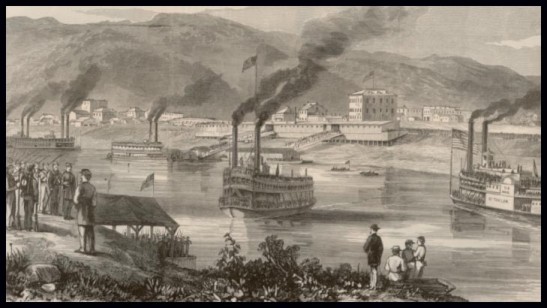 Soldiers on board had to keep a constant eye peeled in both directions: making sure women didn’t jump overboard to escape while also making sure men didn’t swim out and climb aboard (for some women were soliciting business along the way by shouting to guys on shore).
Soldiers on board had to keep a constant eye peeled in both directions: making sure women didn’t jump overboard to escape while also making sure men didn’t swim out and climb aboard (for some women were soliciting business along the way by shouting to guys on shore).
Bad news travels fast, the saying goes. When the Love Boat reached Louisville, city leaders rowed out to meet it and said, “You’re not dumping them here!” A bunch of sheriff’s deputies were waiting with shotguns at the landing to back up that order. They wouldn’t even let the Idahoe dock for supplies.
So she headed up river to Cincinnati, where the same thing happened. “There is not much desire on the part of our authorities to welcome such a large addition to the already overflowing numbers engaged in their peculiar profession,” the Cincinnati Gazette reported.
In fact, the Love Boat’s strange oddessy was becoming national news across the north. Papers all along the Ohio River followed the boat’s movements, eagerly reporting every lurid detail in Victorian rapture. A Cleveland, Ohio newspaper wrote, “The majority are a homely, forlorn set of degraded creatures… they managed to smuggle a little liquor on board, which gave out on the second day. Several became intoxicated and indulged in a free fight, with knives being used.”
The poor woebegone captain now set course for St. Louis. This time the mayor sent a delegation that met the boat long before it even came close to that city with the simple message, “You’re not going to make Nashville’s problem our problem!”
Eventually, the Idahoe had nowhere left to go but home. In early August, she docked and deposited the 98 women onboard (there’s no word on how 13 of the original 111 vanished along the way) back in Nashville where it all began.
It had been quite a 28 day trip. An army inspector found the Idahoe’s stateroom “badly damaged, and all the mattresses severely soiled.” The captain was paid the equivalent of $82,000 in today’s dollars to cover the destruction, and –according to the official report- for food and “medicine peculiar to the women of this diseased class.”
I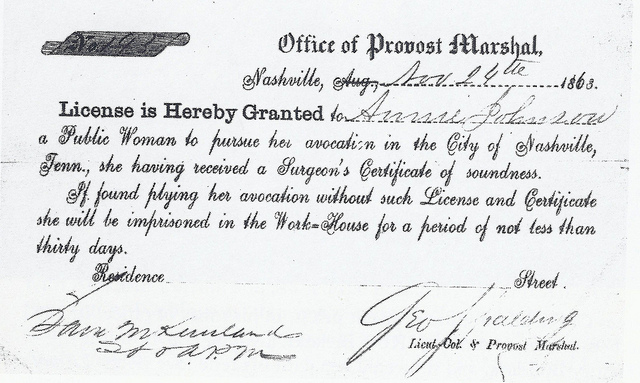 n the end, Rosecrans solved his army’s STD outbreak with innovation. He figured if you can’t beat ‘em, join ‘em. So he required all prostitutes to get a $5 license as a “Public Woman” to work in Nashville, plus undergo a weekly physical examination by an army doctor (for 50 cents per visit). Diseased hookers were sent to a special military hospital for medical treatment. If a soldier patronized an unlicensed prostitute, or if one was found working without a license, it was 30 days in jail. The program cost $6,000 to operate, and it took in $5,900, almost paying for itself.
n the end, Rosecrans solved his army’s STD outbreak with innovation. He figured if you can’t beat ‘em, join ‘em. So he required all prostitutes to get a $5 license as a “Public Woman” to work in Nashville, plus undergo a weekly physical examination by an army doctor (for 50 cents per visit). Diseased hookers were sent to a special military hospital for medical treatment. If a soldier patronized an unlicensed prostitute, or if one was found working without a license, it was 30 days in jail. The program cost $6,000 to operate, and it took in $5,900, almost paying for itself.
The result: in less than a year, the number of STD cases dropped dramatically in both prostitutes and their patrons. Rosecrans didn’t realize it, but he had inadvertently stumbled upon public health care.
Make no mistake: I do NOT advocate the legalization of prostitution. But this bizarre story does leave you with three morals:
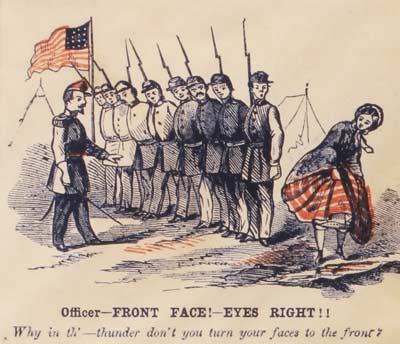 * When faced with a pressing problem, it’s good to think outside the box and try an unorthodox solution.
* When faced with a pressing problem, it’s good to think outside the box and try an unorthodox solution.
*If that fails, try, try, again.
* Finally, going on an inland river cruise with 111 bitterly angry prostitutes isn’t fun. Visit Yellowstone instead; you’ll be glad you did.
Did you find this enjoyable or helpful? Please continue to join me each week, and I invite you to read Tell it Like Tupper and share your review!
Curious about Tell It Like Tupper? Here’s a chance to see for yourself. Take a sneak peek at a couple chapters in this free downloadable excerpt.

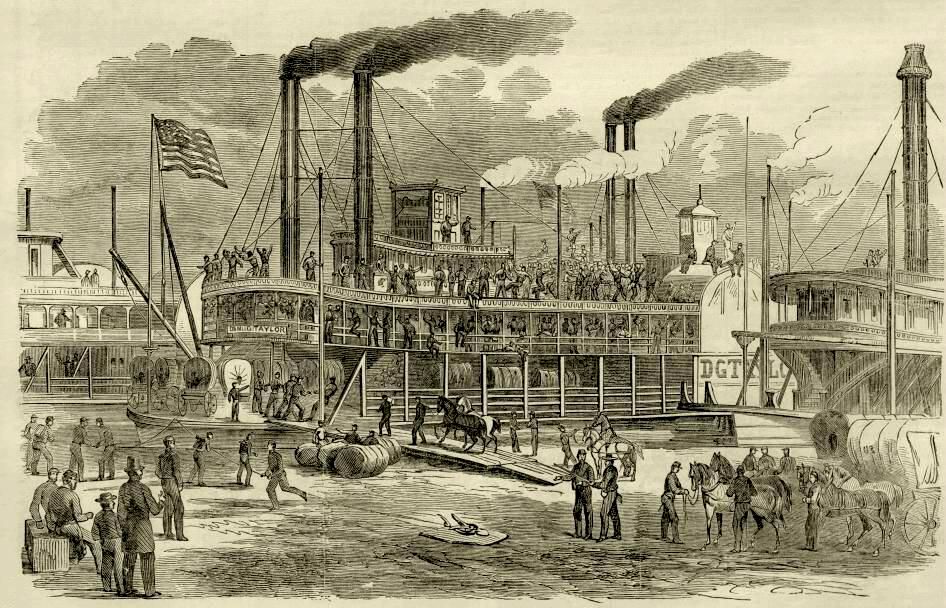
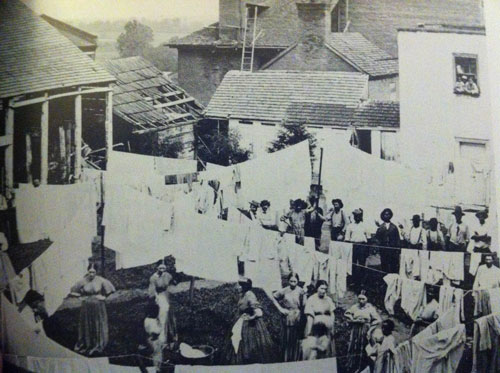
Hi,
Do you know if there are any books written about this boat? I’m doing some research on it and was wondering if anything had been written about it. If not, would you mind telling me where you got your information?
Thanks,
Phil
Pingback: NASHVILLE'S SMOKEY ROW AND GEN. ROSECRANS' PUBLIC SAFETY LAWS - How Can A Man Die Better